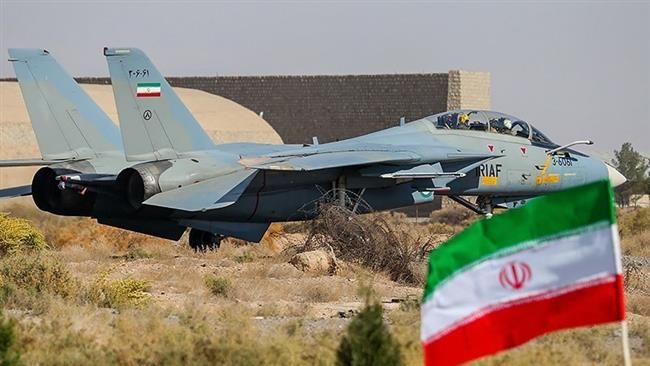Mach 10 UFOs Are Spying on Iranian Nuclear Sites
Article by David Axe April 15, 2020 (nationalinterest.org)
• During the Iran/Iraq War in the 1980s, Iranian F-14 Tomcat pilots successfully employed the F-14’s long-range, heavyweight AIM-54 Phoenix missiles to shoot down enemy planes. Over the decades, Iran has continued to repair and upgrade its surviving F-14s, scouring the globe for parts in defiance of a US government embargo. While the U.S. retired its’ F-14s in 2006, Iran still operates its’ forty remaining F-14 Tomcat fighter jets, some of history’s most powerful interceptor aircraft.
• Since then, Tehran has built three major nuclear facilities that could, in theory, be used to assemble atomic weapons. When this became public knowledge in 2002, “A number of reconnaissance UAVs (‘unmanned aerial vehicles’) were sent to collect intelligence to prepare for a possible attack” by Western forces, according to a 2013 story in Combat Aircraft magazine by Babak Taghvaee. In 2004, Iran deployed a task force composed of eight F-4E fighters and eight F-14s, plus a former 707 airliner and a C-130 cargo plane outfitted with sensors and radios to protect its nuclear facilities.
• Iran’s Tomcat fighter jets have reportedly come in close contact with mysterious aircraft while defending its airspace. The Iranian task force believes these were CIA drones with “astonishing flight characteristics.” The UAVs could jam radars and disrupt jet interceptors’ navigation systems. They could hover and fly at night. They flew “outside the atmosphere” at hypersonic speeds of up to Mach 10, while most air forces around the world struggle to reach Mach five. And they emitted a telltale blue light that led to their nickname: “luminous objects.”
• In 2009, the US Air Force and the CIA deployed the RQ-170 Sentinel drone based in southern Afghanistan within short flying distance of Iran. In December 2011, a Sentinel crashed on the Afghanistan-Iran border and was captured by Iranian troops. In 2013, Iranian fighters tried to intercept American Predator reconnaissance drones outside Tehran’s airspace. A US Air Force F-22 stealth fighter blocked the intercept with some Top Gun-style maneuvers. However, neither the Predator nor the Sentinel is a particularly high-flying drone. Neither has the electrical power to scramble radars and navigation gear, and neither can hover or glow blue.
• In 2012, one of these hypersonic drones allegedly shot down an Iranian F-14. Wrote Taghvaee: “In several cases … F-14s faced them but were unable to operate their armament systems properly.” “One Tomcat taking off to intercept a luminous object on January 26, 2012 mysteriously exploded, killing both crewmen,” implying that the UAV drone was responsible.
• [Editor’s Note] Did these US Air Force drone UAVs look anything like a tic tac?
Here’s What You Need To Remember: Rumors abound that the Air Force and CIA operate a stealthy new drone that has not been disclosed to the public. Even if they do, it’s unlikely that the new UAV is capable of Mach-10 hypersonic flight—the Pentagon is still struggling to reach Mach five.
Iran is the only other country besides the United States to operate arguably history’s most powerful interceptor aircraft, the F-14 Tomcat. And the Islamic republic has worked the twin-engine, swing-wing fighters hard.
The F-14s played a major role in Iran’s war with Iraq from 1980 to 1988. Iranian Tomcat pilots were the only ones to successfully employ the F-14’s long-range, heavyweight AIM-54 Phoenix missile to shoot down enemy planes.
In the decades after the war, Tehran repaired and upgraded the surviving F-14s, scouring the globe for parts in defiance of a U.S. government embargo.
The Americans retired their F-14s in 2006, but around 40 of Iran’s Tomcats remain active. Their main role is defending Iran’s nuclear sites. It’s a mission that has brought the interceptors in close contact with some very mysterious aircraft, according to a bizarre and fascinating 2013 story in Combat Aircraft magazine by reporter Babak Taghvaee.
The Iranians believed the objects were spy drones belonging to the U.S. Central Intelligence Agency, sent to sniff out Tehran’s suspected atomic weapons program. But they attribute to these alleged unmanned aerial vehicles flight characteristics and capabilities far beyond what any known drone can achieve.
FAIR USE NOTICE: This page contains copyrighted material the use of which has not been specifically authorized by the copyright owner. ExoNews.org distributes this material for the purpose of news reporting, educational research, comment and criticism, constituting Fair Use under 17 U.S.C § 107. Please contact the Editor at ExoNews with any copyright issue.
